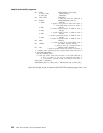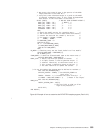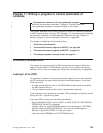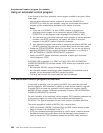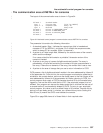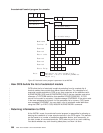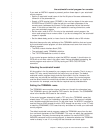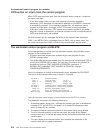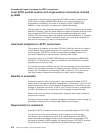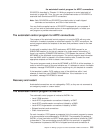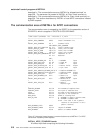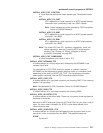
CICS action on return from the control program
When CICS receives control back from the autoinstall control program, it examines
the return code field:
v If the return code is zero, and the other required information supplied is
satisfactory, CICS schedules the transaction specified on the MODIFY command
to complete the request. If the installation process fails, the autoinstall control
program is driven again, as though a DELETE function is being processed.
v If the return code is not zero, CICS rejects the connection request in the same
way that it rejects an attempt by an unknown console to send a modify request to
CICS when autoinstall is not enabled.
For all autoinstall activity, messages are written to the transient data destination
CADL. If an INSTALL fails, a message is sent to CADL, with a reason code. You
can check the output from CADL to find out why an autoinstall request failed.
The autoinstall control program at DELETE
To provide symmetry of control over the autoinstall process, the autoinstall control
program is also invoked when:
v A console autoinstall request was accepted by the user program, but the
INSTALL process failed.
v The delete delay period has passed since the console was last used and CICS is
running with AICONS=YES in effect. You can query this status of autoinstall for
consoles by issuing a CEMT INQUIRE AUTOINSTALL command. If
AICONS=YES is specified, CEMT INQUIRE AUTOINSTALL displays
CONSOLES(PROGAUTO).
Input to the program is through a communication area, addressed by DFHEICAP.
The layout of the communication area is shown in Figure 36.
The parameter list contains the following information:
1. A standard header, where byte 1 indicates the request type (this is hexadecimal
character X’FE’ for DELETE), and bytes 2 to 3 contain the component code,
which is always ZC for consoles.
2. The second fullword contains the termid of the console that is being deleted.
3. The third fullword contains, in the first two bytes, the length of the deleted
console name and, in the last two bytes, the first and second characters of the
console name.
4. The last 6 bytes of the communications area contains the remainder of the
console name (third to eighth characters).
Fullword 1 Standard Header
Byte 1 Function Code (X'FE')
Bytes2-3 Component Code Always 'ZC'
Byte 4 Reserved Always X'00'
Fullword 2 Terminal ID of console being deleted
Fullword 3 Consolename of console being deleted
Bytes 1-2 Deleted consolename length
Bytes 3-4 Start of deleted consolename ID
Next 6 bytes Remainder of deleted consolename ID
Figure 36. Autoinstall control program’s communication area at DELETE for consoles
the autoinstall control program for consoles
510
CICS TS for OS/390: CICS Customization Guide
|
|
|
|
|
|
|
|
|
|
|
|
|
|
|
|
|
|
|
|
|
|
|
|
|
|
|
|
|
|
|
|
|
|
|
|
|



